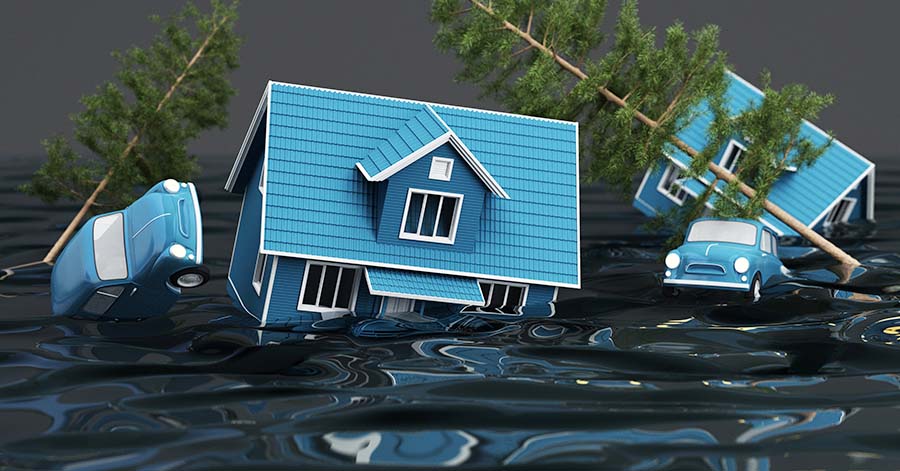Flood Insurance Coverage – What Is It?

Water can do thousands of dollars in damage. Flood insurance can help you prevent such dire financial losses. Knowing what your policy covers can help you prepare in the face of a loss. Just like most other insurance policies, it doesn’t cover everything. Knowing what it does and does not cover can help you in the end.
[sc_content_link label=”Shop and compare insurance quotes.Get today’s insurance rates.” cat=”home”]
Something important to note – if you live in a flood zone, your mortgage lender will require you to carry flood insurance. You don’t have the option. If you don’t carry it, they won’t provide you with a loan. If you already have a loan with them, they can force place the insurance. This basically means buy it for you and usually at a very inflated rate, which you then pay as a part of your mortgage payment.
Flood Insurance and What it Covers
There are two types of flood insurance – building and personal property. If you purchase your insurance through the National Flood Insurance Program, you’ll receive coverage up to $250,000 for the building and up to $100,000 for personal property.
The building policy covers the lesser of the cost of rebuilding the parts of the home that were damaged or the actual value of the home. It covers the following:
- The home
- The home’s foundation
- Electrical systems
- Plumbing systems
- HVAC systems
- Water heater
- Kitchen appliances in the home
- Permanent flooring
- Permanent cabinets or bookcases
- Blinds
- Detached garages
- The cost of debris removal
[sc_content_link label=”Shop and compare insurance quotes.” cat=”home”]
The personal property policy covers the non-permanent things in your home, including:
- Furniture
- Electronics
- Clothing
- Window treatments except blinds
- Portable AC units
- Portable appliances
- Non-kitchen appliances
- Frozen food
- $2,500 in personal valuables
What Flood Insurance Does Not Cover
Despite its cost, flood insurance does not cover everything. Most notably, it does not cover valuables. Jewelry, precious metals, and investments, such as stock certificates, cash, or bonds, are not covered.
It also does not cover:
- Most exterior damage including landscaping, fence, patio, deck, swimming pool, and retaining walls
- Cars
- Sewer backup
- The cost to live elsewhere while the home is being fixed
- Mold damage that could have been prevented
- Lost income
Limited Basement Coverage
Basements are below the lowest living level and are often at risk for flooding. The coverage for the basement is often limited. The building coverage remains fairly similar with the exception of flooring, drywall, staircases, and flooring.
The personal coverage does not cover window treatments, bookcases or other wood items, clothing, furniture, and electronics.
The Maximum Coverage
No matter how bad the damage is on your home, the maximum you can receive for the building is $250,000. However, if the damage is severe, the National Flood Insurance Program may offer you an additional $30,000 to do one of the following:
- Raise up the home to prevent future floods
- Tear down the home
- Move the home
The additional $30,000 is included in the $250,000 maximum, though.
Replacement Cost Value and Actual Cost Value
The final decision you must make when choosing flood insurance is the type of replacement cost coverage you want. Replacement cost value replaces the home at the cost you purchased it. Actual cost value takes depreciation into consideration, giving you less money to fix or replace the home.
Most states participate in the Flood program, but it pays to find out if your home is not a designated flood plain and you want coverage. It can help you financially should you experience a flood and loss as a result.
[sc_content_link label=”Get the right insurance coverage.” cat=”home”]
